- About us»
- Net income calculator»
- Population aging»
-
- Least developed regions»
-
- Average wage
- Material need benefits
- Meal allowance
- Counties of Slovakia
- Inflation
- Living and Subsistence Minimum
- Unemployment of Czechia and Slovakia
- NACE Classification
-
- Life expectancy
- Gender differences
- Youth unemployment and NEET
- Minimum wage in EU
- Unemployment rates of different age groups
- Share of salaries on GDP
- Unemployment rate
- Percentage of employees ususally working at nights
- NEET
- Employment rate
- Long term unemployment
-
- Bratislava and surroundings
- Kopanice
- Danube river
- lower Vah river
- middle Vár river
- upper Nitra river
- lower Nitra river
- Mining cities
- Kysuce a Orava
- upper Vah river - Liptov
- Spiš cities
- upper Hron river
- Juhoslovenská kotlina
- Košice fold and Torysa river
- upper Zemplín
- lower Zemplín
- EU regions
- NUTS3 regions of Slovakia
- LAU1 dataset
-
- Projects and activities
- Inclusive growth»
- Good work
- Project SKRS
- Social system – reality and vision
- Library
-
- Education of unemployed
- Young unemployed not taking part in education
- Proposal to change the system of education funding
- News»
- Contact
Norway – NO
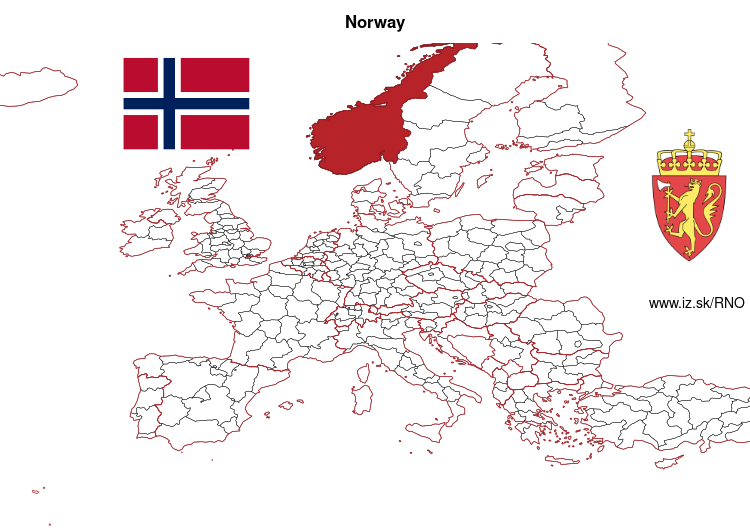
More on wikipedia wikidata Q20 on OpenStreetMap Norway slovensky: NO
Subregions: Norway, Oslo og Akershus, Innlandet, Sør-Østlandet, Agder og Rogaland, Vestlandet, Trøndelag, Nord-Norge
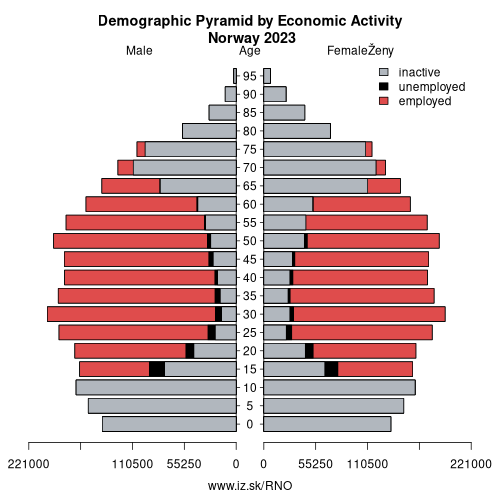
Unemployment
| Indicator | Period | Value |
|---|---|---|
| Unemployment | ||
| unemployment rate | 2024 | 4.1 |
| youth unemployment rate | 2024 | 12.1 |
| unemployment rate of low educated people | 2025q2 | 12.2 |
| Long term unemployment | ||
| long term unemployment | 2024 | 0.6 |
| share of long term unemployed | 2024 | 15.4 |
Composition of population according to age group, education and economic activity, Norway
| Age group | Low education | Middle education | High education |
|---|---|---|---|
| Y20-29 | P: 112.7 E: 74.7; U: 7.7; I: 30.3 | P: 295.0 E: 217.9; U: 12.7; I: 64.4 | P: 283.8 E: 240.6; U: 9.9; I: 33.3 |
| Y30-39 | P: 124.1 E: 84.1; U: 5.3; I: 34.7 | P: 213.8 E: 187.2; U: 4.5; I: 22.1 | P: 422.7 E: 382.5; U: 10.9; I: 29.3 |
| Y40-49 | P: 105.7 E: 64.4; U: 3.3; I: 38.0 | P: 242.0 E: 201.7; U: 4.1; I: 36.2 | P: 360.4 E: 328.6; U: 4.4; I: 27.4 |
| Y50-59 | P: 128.1 E: 69.7; U: 3.2; I: 55.2 | P: 302.2 E: 240.8; U: 2.7; I: 58.7 | P: 303.0 E: 266.1; U: 3.8; I: 33.1 |
| Y60-69 | P: 122.5 E: 47.8; U: 0.6; I: 74.1 | P: 268.3 E: 139.8; U: 1.7; I: 126.8 | P: 213.0 E: 129.2; U: 1.1; I: 82.7 |
Note: in thousands in 2023, according to labour force sample survey. P – total population, E – employed, U – unemployed, I – number of economically inactive
Demographics
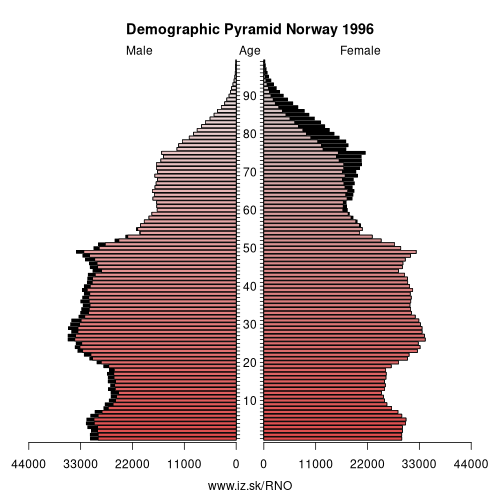
| Indicator | Period | Value |
|---|---|---|
| Demographics | ||
| number of inhabitants | 2024 | 5 550 217 |
| population density | 2023 | 15.2 |
| old-age dependency ratio | 2024 | 28.8 |
| Population ageing | ||
| unemployment rate – over 55 years | 2025q2 | 2.9 |
| aggregate replacement ratio | 2024 | 0.55 |
| aggregate replacement ratio – females | 2024 | 0.57 |
| life expectancy of a 50 year old | 2023 | 34.4 |
| healty life expectancy at 50 years | 2023 | 23.1 |
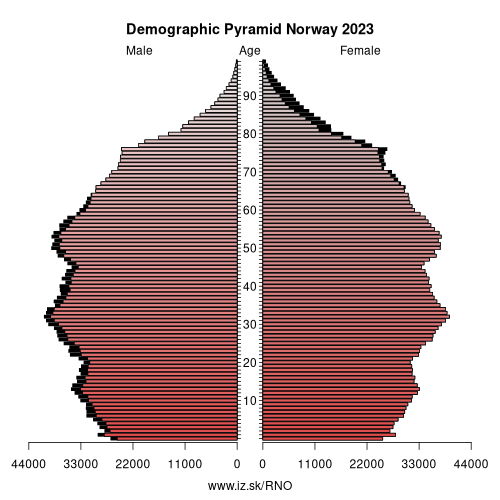
Employment by sectors, Norway
| NACE r2 | % | NACE r2 | % | ||
|---|---|---|---|---|---|
| A | 73.8 | 3% | B-E | 285.6 | 10% |
| F | 234.3 | 8% | G-I | 604.2 | 21% |
| J | 127.9 | 4% | K | 47.2 | 2% |
| L | 35.1 | 1% | M_N | 321 | 11% |
| NRP | 25.5 | 1% | O-Q | 1015.6 | 35% |
| R-U | 137.6 | 5% | TOTAL | 2907.8 | 100% |
Data for the period year 2024. Source of the data is Eurostat, table [lfst_r_lfe2en2].
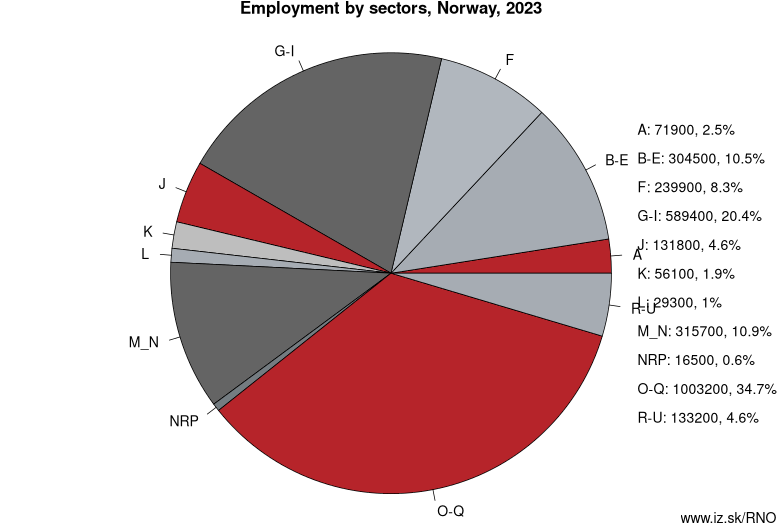
Other: Norway, Netherlands
Subregions: Norway, Oslo og Akershus, Innlandet, Sør-Østlandet, Agder og Rogaland, Vestlandet, Trøndelag, Nord-Norge
Suggested citation: Michal Páleník: Europe and its regions in numbers - Norway – NO, IZ Bratislava, retrieved from: https://www.iz.sk/PNO, ISBN: 978-80-970204-9-1, DOI:10.5281/zenodo.10200164

 Share
Share Facebook
Facebook Twitter
Twitter News
News